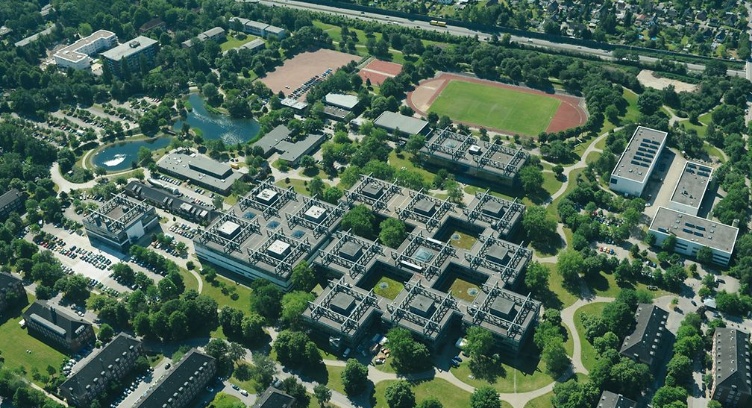Deutsche Telekom yesterday announced that Helmut Schmidt University/University of the Federal Armed Forces Hamburg (HSU/UniBw H) now operates its own 5G campus network. The campus network reliably supplies the Bundeswehr Centre for Digitalization and Technology Research (dtec.bw) with high-performance mobile communications via 5G standalone (5G SA). Partners from science and industry will also use the innovative 5G test bed to trial digital applications. Deutsche Telekom has set up the private 5G network using technology from Ericsson.
With the 5G campus network, HSU/UniBw H is researching the use of wireless connections for industrial production and business processes, among other things. The interplay between the real-time networking of sensors, actuators and cyber-physical systems is being investigated. Cloud computing and artificial intelligence are also being applied. The focus is on applications from the fields of automation technology and logistics, autonomous robots, drone defense systems and 5G-based safety and security applications.
At HSU/UniBw H, Telekom uses the "Campus-Network Private" enterprise customer solution. The company has installed six indoor antennas on the university campus for this purpose. Two further micro transmitting stations were set up outdoors. The 5G SA campus network operates separately from the public mobile network. The entire infrastructure, from the antennas to active system technology, gateways and the network server, is located on the HSU/UniBw H campus. This means that all data traffic remains in the local campus network.
The university's local site connection enables particularly fast data processing. The short distances for the independent 5G architecture support data-intensive applications with ultra-short response times in the millisecond range. The 5G SA network operates on frequencies reserved specifically for the university in the 3.7 to 3.8 gigahertz range. Up to 100 megahertz bandwidth is therefore exclusively available to the researchers.
One special feature of the campus network's private 5G architecture is that, for the first time, part of the 5G core network is directly connected to a 5G Device and Network Testing (DNT) platform from Ericsson in Düsseldorf. This means that the campus network benefits from the latest updates and further developments from the network technology provider – even before the official market launch. Researchers can thus test the latest network features. Despite the connection to the external Ericsson 5G Device and Network Testing Platform, the university's own data traffic is processed exclusively in the private part of the campus network on site.
HSU/UniBw H can flexibly adapt the private network and manage various functions on-demand. For example, data traffic within the campus network is prioritized for specific applications as required. The closed system is characterized by its high level of data security and reliability: Thanks to redundancy in the architecture of the local core network, the network continues to function reliably even in the event of an interruption to the cloud-based management portal. The university also benefits from guaranteed and continuous availability.
The partners intend to collaborate for an initial period of three years and also test the innovative 5G millimeter wave technology (5G mmWaves) in the future. This involves using the frequency spectrum in the 26 gigahertz range. It is allocated directly to interested parties by the Federal Network Agency and enables high data rates. Currently, use is only permitted for local applications. The frequency spectrum is therefore particularly suitable for 5G campus networks with data-intensive applications.
Prof. Dr.-Ing. Gerd Scholl, Chair of Electrical Measurement Technology at Helmut Schmidt University/University of the Federal Armed Forces Hamburg
5G Standalone will give a further boost to our research into digitalization and future technologies. With Ericsson's network technology and Deutsche Telekom's campus network, we are creating the best conditions for the transfer of innovation between research and practice. On the test site, science and industry are developing new 5G-based products, applications and business models under real conditions.
Klaus Werner, Managing Director Business Customers at Telekom Deutschland
Together with HSU, we have implemented one of the most modern campus networks in Germany, which is based on the latest available standards. It supports important features for the industry such as network slicing and ultra-low latency. With this campus network, HSU will provide valuable insights for the 5G ecosystem and therefore for the entire Industry 4.0.
Daniel Leimbach, Head of Western Europe at Ericsson
As a powerful and secure network technology, 5G lays the foundation for innovations. It is precisely this focus on innovation that unites the partners Helmut Schmidt University, Deutsche Telekom and Ericsson. Together, we are driving research and development into 5G applications for a wide range of industries.




















